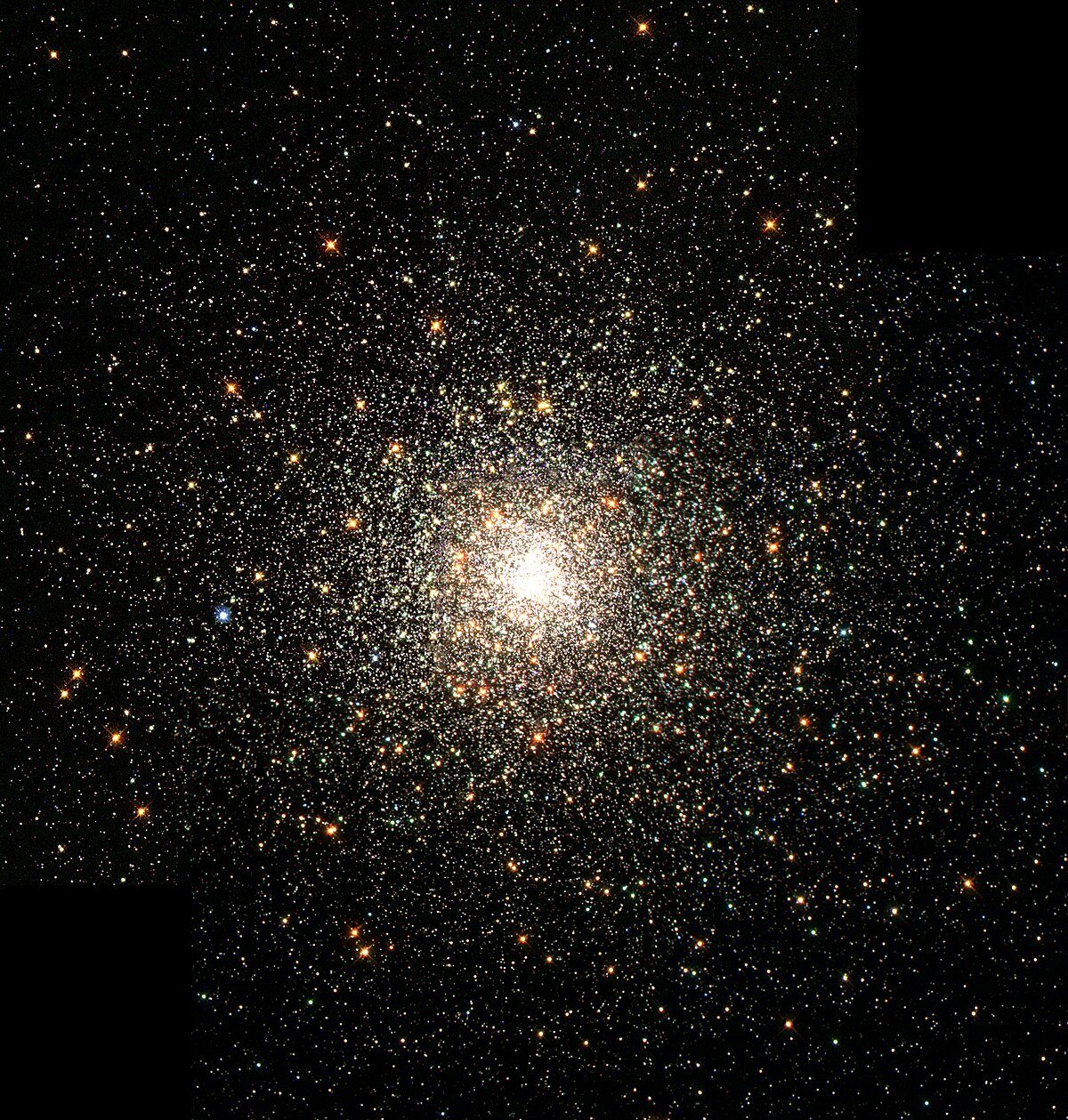While studying Omega Centauri, astronomers and scientists at the Indian Institute of Astrophysics (IIA) discovered that hot stars and white dwarfs emit less ultraviolet radiation than expected.

Globular cluster
- A globular cluster is a spherical grouping of stars.
- Globular clusters are gravitationally bound together, with a higher concentration of stars near their centers.
- They can have tens of thousands to many millions of stars as members.
- They mostly orbit in the extended stellar halos that surround most spiral galaxies.
How are they formed?
- Nobody knows how globular clusters formed. Or what, if any, role they played in the formation of galaxies.
- We know that globular clusters are the most ancient, largest, and most massive type of star cluster. The oldest stars are found in globular clusters.
- Their age is determined by their nearly complete lack of metals, the heavier elements forged in star interiors.
- There are over 150 globular clusters in our Milky Way.
- The Milky Way contains over 150 globular clusters, with possibly more hidden by galactic dust.
- Our neighboring spiral galaxy, the Andromeda galaxy (M31), appears to have around 300 globular clusters.
Difference between a globular cluster and an open cluster
- Globular clusters are large, symmetric, and ancient. They have a diameter of 300 light-years and contain 10 million stars. Open star clusters, on the other hand, contain sibling stars scattered throughout the disc of our galaxy and possibly other galaxies.
- Globular star clusters have a symmetrical shape and are densest in the center. Open star clusters have an irregular shape and are loosely clustered together.
- Globular clusters orbit in our galaxy’s halo. Furthermore, focus on the galaxy’s core while expanding above and below the galactic disc. Open star clusters are more likely to orbit within the disc.
- Millions of stars are found in globular star clusters. However, some globular clusters, such as Omega Centauri, have millions of stars. Open star clusters are made up of hundreds of stars.
Source: https://www.britannica.com/science/globular-cluster
